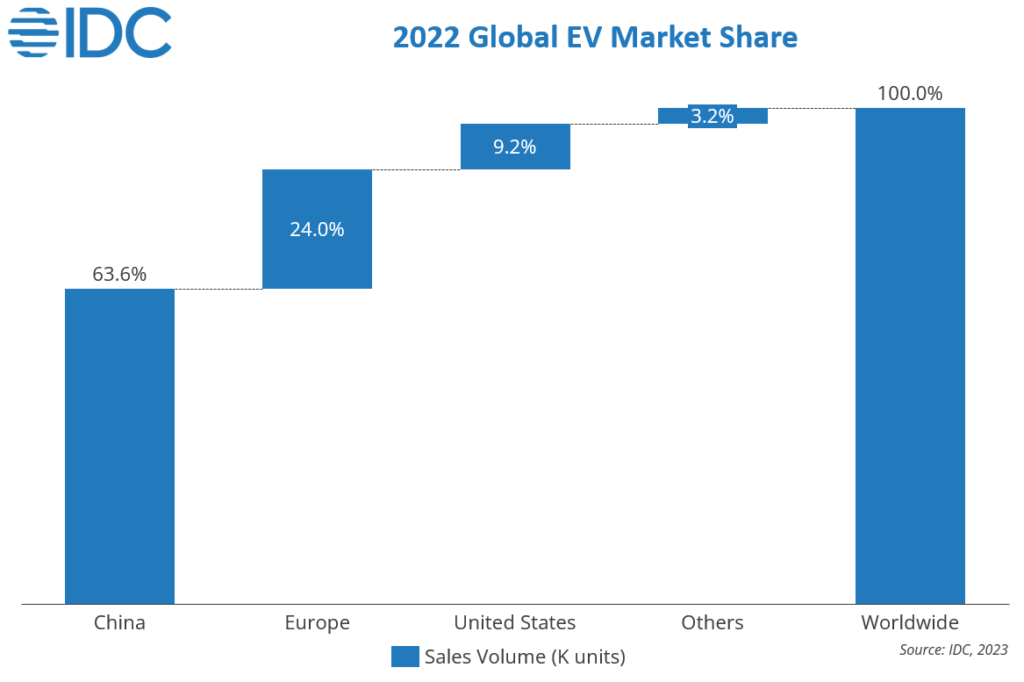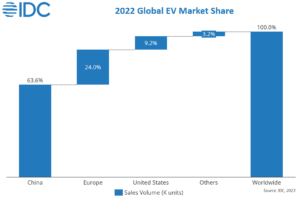The global electronic vehicles (EV) market is rapidly growing due to trends in electrification, connectivity, autonomous driving, and sharing within the automobile industry. In 2022, the worldwide EV market reached close to 11 million units, attaining a penetration rate of 14%, according to IDC.

A significant driver of this growth has been the Chinese market. Influenced by factors such as improved supply, high oil prices, government subsidies, and price-guaranteed promotions by car manufacturers, China’s electronic vehicle market achieved nearly 7 million units in 2022. It also had an impressive penetration rate of 31.3%.
The top three players globally were BYD, Tesla, and SAIC-GM Wuling, who collectively occupied 36.11% of the market in 2022. In China, the dominant players were BYD, SAIC, and Tesla, capturing 53% of the market in the same year. Interestingly, the Chinese EV market is dominated by local brands, with Tesla being the only exception in the top 10. IDC even had some advice for the EV OEMs:
| Target Market | Invest in valuable markets like China, Europe, and North America. Explore potential in developing countries such as Thailand, Philippines, and Indonesia. |
| Corporate Positioning | Choose the right development path based on the company’s goals and positioning. Consider positioning as an energy company or technology company to go beyond the scope of automotive. Maximize synergies between different business portfolios. |
| Technology Strategy | Choose the most suitable technological route considering factors like low cost, time to market, and superior product. Increase investment in R&D, especially in software. |
| Supply Chain Strategy | Rethink the outsourcing strategy and actively arrange upstream core components strategically. Consider investment, cooperation, and self-development to enhance control and influence over the industrial chain. Develop a more digital and intelligent supply chain management system. |
| Talent Strategy | Identify talent shortages early, particularly in internet and communication functions. Expand the talent pool, attract global talent, and create healthy and attractive systems to attract top talent and maintain employee satisfaction. |

